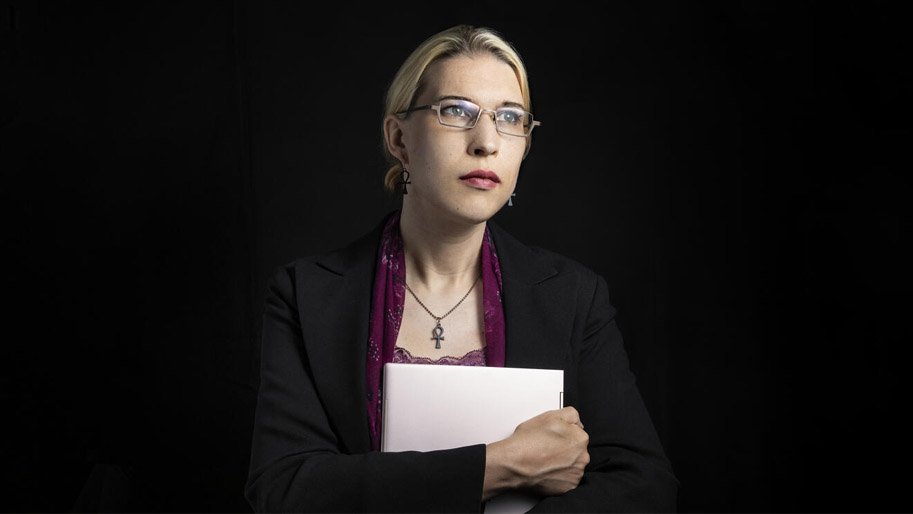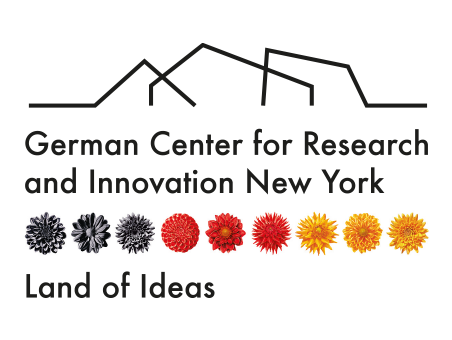The Gut and the Heart
 © Pablo Castagnola/MDC
© Pablo Castagnola/MDC
When Dr. Sofia Forslund’s grandfather unexpectedly died of a heart attack at 62, she felt devastated and confused. By fourteen, she was programming computers, recognizing the power of computation tools to make sense of the world and improve lives. Now she’s using her own science background to conduct research that could help people with cardiovascular disease like her grandfather.
Dr. Forslund is a researcher of bioinformatics and a group leader at the Max Delbrück Center for Molecular Medicine Berlin where she investigates the relationship between the gut’s microbiome and cardiovascular disease. In an interview with her we chat about the gut-heart connection, what makes a healthy microbiome, fecal microbiome transplants and more.
DWIH: Whether it’s probiotics or new research or bestselling books like Darm mit Charme, we’re all vaguely aware of the importance of the microbiome. As an expert in the field, can we collect your views on the basics? How does the gut microbiome affect health? And what makes a microbiome “healthy”?
Forslund: I feel it is important to note that “health” and “disease” are individual concepts – that is “healthy” which lets a person flourish in the way they most want to. That said, we tend to agree on what is good with regards to the gut – a healthy microbiome is one which prevents pathogens from establishing or expanding – bestowing “colonization resistance” – which helps us harvest important nutrients from the food we eat, and which helps maintain the integrity of the intestinal barrier. The latter two at least are connected to maintaining temperance of the immune system, such that inflammation is triggered only when actually needed to combat a threat. Many diseases of the host seem to be linked to chronic low-grade systemic inflammation, which a healthy microbiome is able to soothe and calm down. Examples of this seem to be how microbiota metabolizes dietary fiber into anti-inflammatory short-chain fatty acids.
DWIH: Your research analyzes the linkages between the human host and the microbiome in relation to cardiovascular disease. Could you explain to us the reason for focusing on cardiovascular disease as well as the current status of your research?
Forslund: Ultimately my research aims to prolong life, which starts with warding off that which takes life. Besides cancer, cardiovascular (and metabolic, interlinked) disease is the main death driver globally. It also has personal importance given the loss of my grandfather, as noted, and the knowledge I too carry some risk factors. Moreover, it seemed and seems like an area where what I know how to do can have impact – these diseases are fantastically complex regulatory failures of the system of host cells, including the populations of immune cells, and our symbiont microbes, integrating external signals as well as feedback from where medications used to halt disease progression exerts microbiome side effects. I was looking for a disease complex enough that it would make sense to apply systems analyses to it, and also had the fortune of getting to access the Berlin research environment, which through MDC, Charité, BIH, ECRC and DZHK provided a very good basis to start engaging with host-microbiome factors of cardiovascular disease. Some recent highlights are ongoing studies in dietary interventions – testing factors such as salt content, ketogenic diets, probiotics or fasting regimes, to see if any of them improve cardiovascular health via microbiome intermediates. I also remain in touch with a consortium I worked with during post-doc, where we soon hopefully will report in-depth on how the microbiome responds to the sometimes complex medication regimes cardiovascular patients are on. In the near future, I also hope to investigate in more detail how hormones like estrogen and testosterone impacts cardiovascular risk and progression.
DWIH: You received your PhD in molecular biotechnology. How is technological progress—most notably in the fields of AI, big data and data analysis—advancing your research on the relation between the human host and microbes and how is this reflected in your daily work?
Forslund: Due to lack of patience, I was always drawn to computational biology for how it becomes possible to scale and automate it, then draw conclusions that become more than the sum of the parts. This absolutely requires the data science component, but even more, it depends on having enough input data. So advances in sequencing for example have been instrumental – mostly in how they make feasible large enough study cohorts to achieve statistical power despite multiple testing. Of course, a lot of what we do for example in the projects mentioned above would simply have been impossible a few decades ago since the scale of the computations require the kind of compute clusters that are now available. The data analysis part is the one I am most personally interested and invested in, and the one where I feel I can most contribute to advances.
DWIH: In your own work you have discussed aiming for personalized therapies and even the development of an app to track our day-to-day health. How would you like to see the results of your research translated into treatment?
Forslund: The goal as I see it would be preclinical early detection and course correction for the system going off track, whether through pharmaceutical, dietary or other adjustments. So if we gained enough knowledge of disease risk biomarker signatures, including their variability across individuals, then we could perhaps couple that with minimally invasive data collection realistic also in a home setting, and through the gradually improving models, be able to achieve much greater success in personalized disease prevention, before there is a need for treatment. This might also perhaps involve such aspects as preventive medication already when there is a preclinical indication picked up by such a system. Issues needing to be resolved are infrastructural, legal and also technical, in the sense of being able to measure relevant markers less invasively than by having someone come in for a blood draw.
DWIH: Can you talk to us about your fascinating research with fecal microbiota transplantations? Have stool transplants shown any promise at reducing recurrent infections?
Forslund: Yes – especially in recurrent C. difficile infection, which can take root after antibiotics exposure, FMT has had very high efficacy, more than in any other indication. There is also interesting research out of Israel indicating that autologous FMT (transplant from one’s own stored pre-antibiotic stool) is far better at restoring lost gut biodiversity than current probiotics. Some of our current work indicates antibiotic exposure over time damages the microbiota in a way which increases disease risk, so what I would be very interested in is to trial an approach of autologous FMT surrounding planned surgeries, to mitigate the microbiome damage from the prophylactic antibiotics. Here, the obstacles in the way seem to be largely regulatory, after some recent cases where FMT had rare adverse effects.
DWIH: You have been vocal about your experiences as a queer trans woman in STEM. Reflecting on Pride Month and your own path to live boldly and authentically, we ask: what are you proud of this month?
Forslund: Any other year, my answer would have been trans centered. However, this year I feel something else overshadows it: I feel proud of those in the US, whether trans or cis, that protest the issues of deep systemic racism that plague its law enforcement system. Black lives matter! (Including, let us not forget perhaps those most severely marginalized, Black trans lives!)
DWIH: Just this month we launched our #InclusiveResearchGermany campaign, which highlights diversity within the German research and innovation scenes. What role do you believe diversity and inclusion plays in science?
Forslund: The first role would be one of fairness – humans, being pack animals, need to be included, and need to see ourselves reflected in the image of the group we belong to; not having that causes distress which harms and holds us back in subtle ways. So it is fair (in sense of real opportunities given) to create an inclusive scientific environment, the measure of which inclusivity is the resulting diversity of backgrounds and identities. Rare demographics may need special efforts to achieve such visibility, simply because their rarity otherwise compounds. Moreover, lack of inclusivity drives biased expectation and biased treatment, in worst case discrimination, which further drains time and energy to those of marginalized demographics. So not only is it important for reasons of fairness, but also so as to make the most of our capacity, letting it be focused on the scientific objectives themselves, rather than having to manage and navigate predjudice, exclusion and minority stress. Last, science drives technology and other translational applications, which impact wider society; this impact is never fully apolitical, and a diversity of experiences, identities and backgrounds within the scientific endeavour helps us better see the full implications of our research so that we can better shape this translation; such as researchers from minority backgrounds being sometimes better positioned to see how a given application might end up abused or misapplied.
DWIH: Thanks for giving us so much to think about, Dr. Forslund. Be well.
